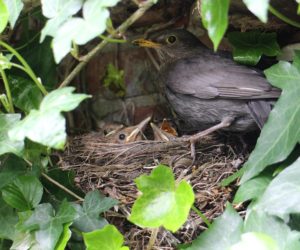Why ivy is a secret weapon for Edinburgh’s wildlife in winter
,
To some people ivy has a bad reputation but it could be one of the most important habitats for wildlife in the city.
As one of Edinburgh’s few native evergreen plants ivy is an incredibly important plant. Here are a few reasons why and I love it, and why you should too.
Food for thought
My thoughts often turn to food as the temperature drops and and I am sure the city’s wildlife experiences the same effect as winter approaches. Fortunately ivy provides an excellent source of nectar, pollen and nutritious berries just when many other sources of food are becoming scarce. At this time of year it is especially important for pollinating insects as they are about to go into hibernation and need to build up stores of energy to get them through the winter.
Winter shelter
A dense mat of ivy can make a brilliant place for birds and small mammals to shelter. It provides cover from the elements and places to hide. In fact this is such an important habitat that cutting ivy with bird nests in them is against the law, so if you need to prune your ivy the best time to do it is between September and March.
Grey to green
Growing ivy is one of the easiest ways to bring colour and wildlife into hard grey urban spaces. It can be easily trained into something beautiful and artistic and there are lots of great examples of people using it playfully to re-green their neighbourhoods.
Natural armour
Despite its reputation for killing trees and breaking down walls ivy it can actually help shelter them as long as there is no underlying damage. Studies have shown that ivy can shield walls and buildings from frost, salt and pollution and can help create a natural layer of insulation.
Tips for getting your ivy going
- Ivy prefers fertile, moist but well drained soil, although it can adapt to grow in most conditions including poor, compacted soil and will tolerate a wide range of pH levels.
- To get the plant off to a good start, before planting excavate the soil to a depth of 25 to 30cm, and then dig in a generous layer of organic peat free compost or manure. Although it grows in full sun ivy prefers full or partial shade and needs regular watering until the plant is established, which usually takes one growing season.
- Ivy looks its best if the plant is lightly trimmed two or three times a year. Clip around the edges of an ivy patch if the plant is outgrowing its boundaries. If the plant looks shaggy or too tall prune it with sturdy hedge trimmers. This pruning, which you should do every three or four years, revitalises a tired plant and helps fill in bare spots.
Commit to helping Edinburgh’s pollinators by signing our pledge today




